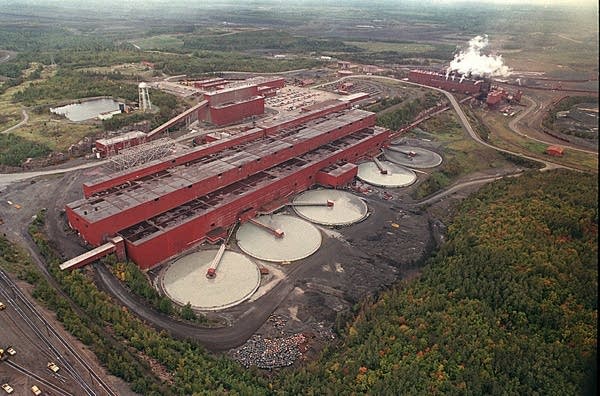PolyMet files first major mine permit applications

Go Deeper.
Create an account or log in to save stories.
Like this?
Thanks for liking this story! We have added it to a list of your favorite stories.
PolyMet Mining has submitted its first three major state permit applications, which it's calling "another important milestone" in its bid to open the first ever copper-nickel mine in Minnesota.
The company submitted a nearly 1,900 page application with the Minnesota Pollution Control Agency for its water quality permit. It also applied to the Minnesota Department of Natural Resources for a water use permit and a dam safety permit for the tailings basin where the company would deposit mine waste left over from processing.
"We recognize that water is one of Minnesota's most valuable resources," PolyMet CEO Jon Cherry said in a statement. "We have taken extra time and effort to ensure that our permit applications detail the ways in which we will protect this resource and meet the various regulatory standards."
But opponents of the project say it is just another step in a process that could drag out two to three years before Minnesota ultimately decides whether to approve a project that promises an economic revival to northeast Minnesota, but also unprecedented environmental risks.
Turn Up Your Support
MPR News helps you turn down the noise and build shared understanding. Turn up your support for this public resource and keep trusted journalism accessible to all.
"PolyMet submits applications, but that doesn't indicate any kind of approval by the agencies," said Kathryn Hoffman with the environmental coalition Mining Truth. "The agencies need to review the applications, declare the applications complete, and then decide what kind of public process there will be on these permits."
PolyMet needs to obtain more than 20 federal, state and local permits before digging its open pit mine and building its processing facility.
The company is expected to apply later this summer for its Permit to Mine, the main permit the company needs from the state, which will spell out how much "financial assurance" the company needs to set aside as a kind of damage deposit to cover clean-up costs and monitoring once the mine closes after its anticipated 20-year life.
PolyMet's proposed operation differs from the state's traditional taconite iron ore mining industry. Copper, nickel and precious metals are bound in ore containing sulfide. When that's exposed to water and air during the mining process, it can create acid mine drainage that can leech heavy metals into surrounding waterways.
That process has created major pollution elsewhere, mainly from mining operations decades ago, but also from more modern mines.
In March, the DNR signed off on the project's 10-year long environmental review process, which spelled out how the company planned to meet state and federal environmental review standards.
The state's "adequacy determination" gave the go-ahead to the Toronto-based company to begin submitting permit applications.
Those applications will spell out in more detail exactly how PolyMet plans to capture and treat polluted water before it's released into the environment, and how it plans to monitor those engineering systems during the life of the mine.
Shortly after the permit applications were filed, Mining Truth issued a statement criticizing PolyMet's plan to recycle an old tailings basin built by LTV Steel to store taconite waste to use in its project.
The group cites a 2014 tailings dam failure at the Mount Polley Mine in British Columbia, as well as a dam collapse at a Brazil iron ore mine last year that killed 17 workers.
"After refusing to consider the best available technology for disposing of mine waste, PolyMet is pushing forward with their plan to use a decades old leaky dam to hold back millions of gallons of potentially hazardous waste material," Hoffman said.
PolyMet CEO Cherry says its permit application spells out how it plans to support its tailings ban with reinforced buttressing and cement mixing. He also says the slope of the dam is much less steep than the dam in British Columbia, and that the company's environmental footprint is reduced by reusing an existing facility.
Cherry says the company also has a strong financial interest to build a safe tailings dam. "And that is so we can continue to mine," he said. "If it's not, then we can't mine. And that's the purpose of our business."
Disputes over the water quality permit application will likely echo disagreements that erupted during the environmental review process.
Tribes and environmental groups say the water models that PolyMet and state agencies rely on are flawed, and underestimate the amount of water flowing through the mine site and the amount of pollution the project could create. They also say polluted water from the site could flow north toward the Boundary Waters Canoe Area Wilderness.
Those disagreements likely could be aired in a contested case hearing, or administrative trial. After reviewing the permit applications for completeness, state agencies could decide to refer applications to an administrative law judge to gather evidence and make a recommendation to an agency about whether permits should be approved, Hoffman said.
And that process, not to mention the possibility of litigation, could take many months, if not years.
The bottom line, Hoffman said, is "there are still a lot of issues that need to be worked out."



